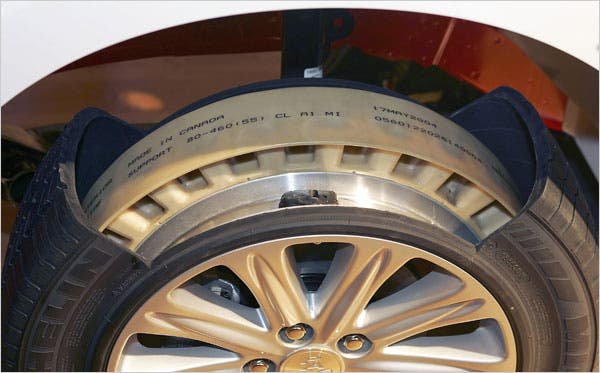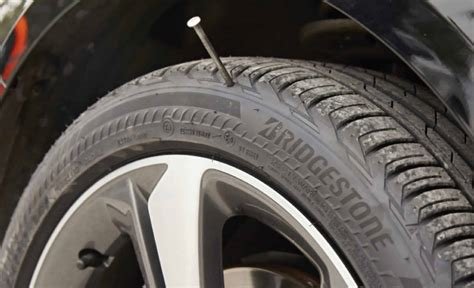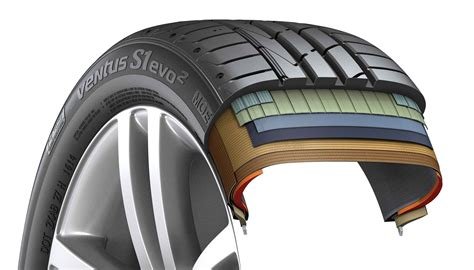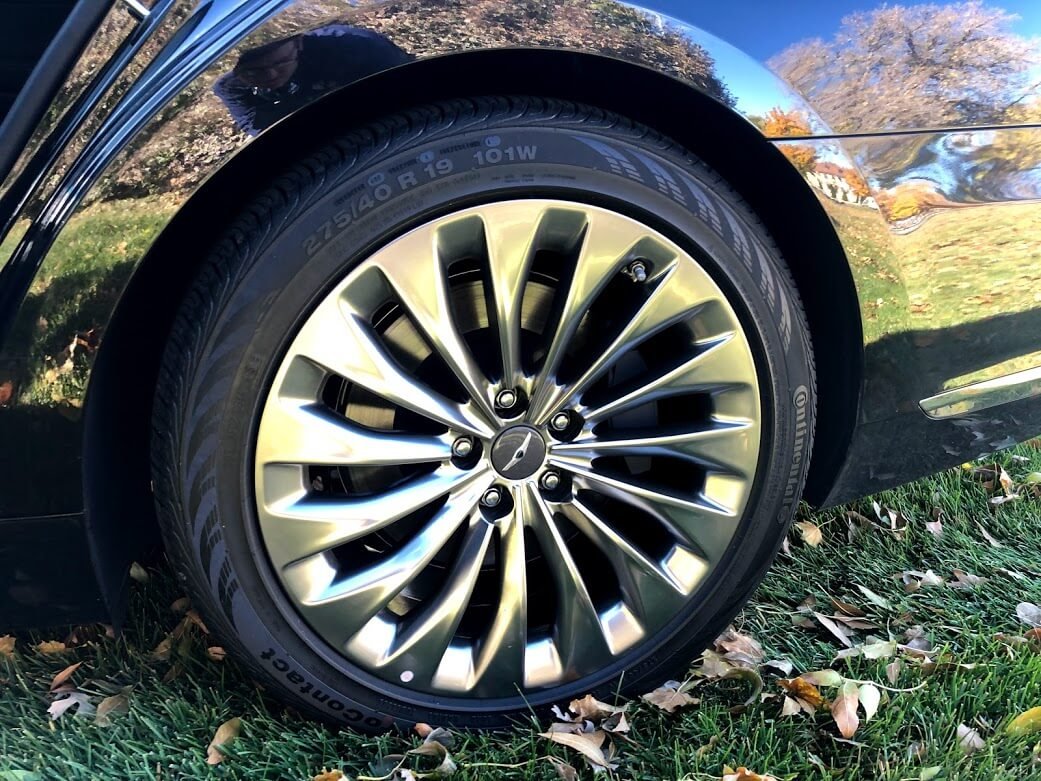Learn about run-flat tires, their benefits, how they compare to standard tires, and tips for maintenance. Discover everything you need to know in this guide.
Run-flat tires are a great choice if you want to keep driving after a flat. They help you stay safe and avoid roadside problems. These tires are different from regular ones because they work even when they lose air. In this article, you will learn about their benefits, how they compare to standard tires, and how to choose the right ones for your car. Plus, we’ll cover how to take care of them and what to expect in terms of costs and warranties. Let’s dive into these key points and get all the info you need!
Overview of Run-Flat Tire Technology
Run-flat tires feature a reinforced sidewall or an internal support ring. This design allows the tire to remain functional when deflated, providing temporary mobility. Essentially, the tire’s construction enables it to support the vehicle’s weight without air pressure, allowing drivers to reach a safe location or repair facility.

Key Features of Run-Flat Tires
Run-flat tires offer several significant features:
- Puncture resistance: They are built to withstand punctures without immediate air loss.
- Emergency mobility: They allow you to drive up to 50 miles at speeds of up to 50 mph after a puncture.
- No spare needed: They eliminate the need for a spare tire, giving you more trunk space.
Benefits of Run-Flat Tires
Run-flat tires offer a range of benefits that enhance driving safety and convenience:
Enhanced Safety and Reduced Risk of Blowouts
Run-flat tires provide greater safety by allowing drivers to continue driving even after a tire is punctured. This reduces the risk of losing control of the vehicle or being stranded on the side of the road.
Convenience of Continuing to Drive After a Puncture
Instead of having to stop and change a tire immediately, drivers can reach a safe location or a repair shop. This is particularly useful in unsafe or inconvenient conditions.

Reduced Need for Immediate Roadside Assistance
With run-flat tires, you are less likely to need roadside assistance in the event of a flat tire. This not only saves time but also minimizes disruptions during your journey.
Comparing Run-Flat Tires to Standard Tires
Understanding the differences between run-flat and standard tires can help you make an informed decision.
Performance Differences and Driving Experience
Run-flat tires generally offer a stiffer ride compared to standard tires due to their reinforced sidewalls. This can affect overall driving comfort but provides enhanced safety features.
Cost Comparison and Value for Money
Run-flat tires typically cost more than standard tires. However, they may offer better value due to their added safety features and reduced need for roadside assistance.
Maintenance and Lifespan Considerations
Run-flat tires often require the same maintenance as standard tires, including regular pressure checks and rotations. Their lifespan can be similar, though it may vary based on driving conditions and tire brand.
Choosing the Right Run-Flat Tires for Your Vehicle
Selecting the appropriate run-flat tires involves several considerations.

Factors to Consider When Selecting Run-Flat Tires
When choosing run-flat tires, consider factors such as vehicle compatibility, driving conditions, and tire performance. Ensure that the tires are suitable for your specific vehicle make and model.
Best Brands and Models for Different Vehicle Types
Top brands like Bridgestone, Michelin, and Goodyear offer a range of run-flat tires tailored for different vehicle types. Research and compare models to find the best fit for your needs.
How to Ensure Compatibility with Your Car
Check your vehicle’s manual or consult with a tire professional to ensure that the run-flat tires you choose are compatible with your car’s specifications and systems.
Maintenance and Care for Run-Flat Tires
Proper maintenance can extend the life of your run-flat tires.
Regular Maintenance Tips to Extend Tire Life
Regularly check and maintain the tire pressure, and ensure proper alignment and balancing. Follow the manufacturer’s guidelines for optimal tire care.
Common Issues and How to Address Them

Address issues like uneven wear or vibration promptly. These can be signs of underlying problems that might affect tire performance.
Recommended Practices for Tire Pressure and Inflation
Maintain proper tire pressure as recommended by the manufacturer. Use a reliable tire pressure monitoring system to keep track of your tire’s condition.
Costs and Warranties Associated with Run-Flat Tires
Understanding the financial aspects of run-flat tires can help you make an informed decision.
Understanding the Costs of Run-Flat Tires
Run-flat tires usually cost more than standard tires due to their advanced technology and benefits. Weigh the cost against the potential benefits to determine if they are right for you.
Warranty Options and Coverage Details
Most run-flat tires come with warranties that cover manufacturing defects and premature wear. Check the warranty details for coverage on issues related to run-flat capabilities.
Evaluating Long-Term Cost vs. Benefits
Consider the long-term benefits of run-flat tires, such as reduced roadside assistance needs and enhanced safety, when evaluating their cost.
Innovations and Future Trends in Run-Flat Tire Technology

The field of tire technology continues to evolve.
Recent Advancements in Run-Flat Technology
Recent innovations include improvements in sidewall reinforcement and tire materials, enhancing performance and comfort.
Emerging Trends and Future Developments
Future trends may involve further advancements in self-sealing technology and intelligent tire systems, providing even greater convenience and safety.
How Technology Is Improving Tire Safety and Performance
Advancements in technology are leading to more durable, efficient, and comfortable run-flat tires, making them a viable option for modern drivers.
Run-Flat Tires and Vehicle Performance
Run-flat tires can affect your vehicle’s overall performance.

Impact on Vehicle Handling and Comfort
Run-flat tires may provide a firmer ride due to their design. However, they improve safety by allowing continued driving after a puncture.
Effects on Fuel Efficiency and Driving Dynamics
Fuel efficiency might be slightly impacted by the additional weight and rolling resistance of run-flat tires. However, their benefits often outweigh these effects.
Compatibility with Vehicle Stability Systems
Run-flat tires are designed to be compatible with most modern vehicle stability systems, ensuring that they function effectively within the vehicle’s safety framework.
Run-flat tires offer safety and convenience by letting you drive on after a puncture. We’ve covered their benefits, how they compare to standard tires, and essential maintenance tips. If you found this information useful, please leave a comment or share this article. Explore more of our content to stay informed about the best tire options and other driving tips!
FAQs about Run-Flat Tires
What Are Run-Flat Tires?
Run-flat tires are designed to keep you moving even after a puncture. They have reinforced sidewalls that support the vehicle’s weight without air pressure, allowing you to drive for a limited distance at reduced speeds. This technology helps you reach a safe location or repair shop without needing immediate roadside assistance.
How Far Can You Drive on Run-Flat Tires After a Puncture?
After a puncture, you can typically drive up to 50 miles at speeds of up to 50 mph with run-flat tires. The exact distance may vary based on the tire brand and model, as well as the driving conditions. Always check the manufacturer’s recommendations for your specific tires.
Are Run-Flat Tires More Expensive Than Standard Tires?
Yes, run-flat tires generally cost more than standard tires. This higher price reflects the advanced technology and added safety features. However, the cost can be offset by reduced roadside assistance needs and increased safety.
Do Run-Flat Tires Provide a Rougher Ride?
Run-flat tires can offer a firmer ride compared to standard tires due to their reinforced sidewalls. This stiffness can affect overall driving comfort, but it also enhances safety by allowing continued driving even after a puncture.
How Should You Maintain Run-Flat Tires?
Maintaining run-flat tires involves regular checks of tire pressure, ensuring proper alignment, and following the manufacturer’s maintenance guidelines. Regular maintenance is crucial to ensure the tires perform optimally and last as long as possible.